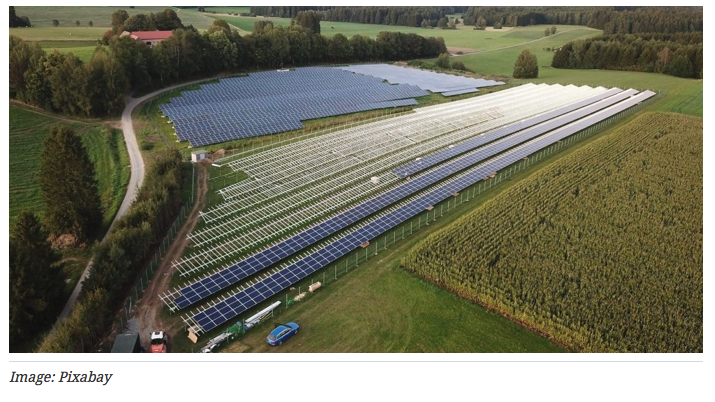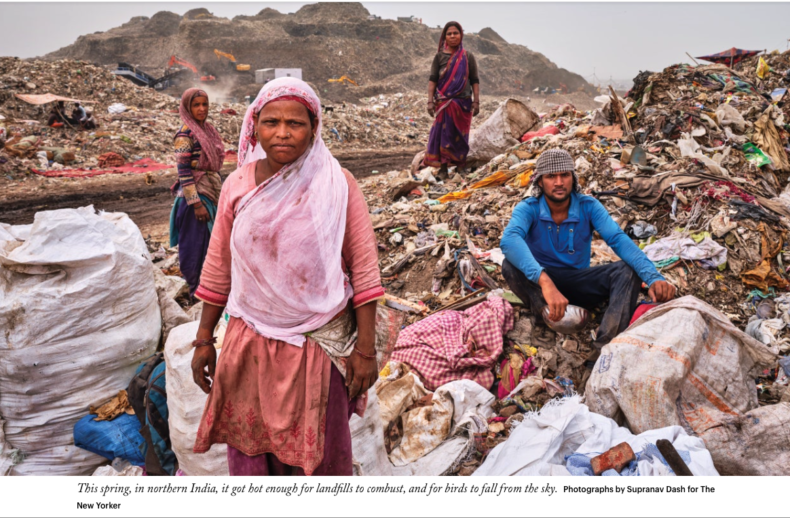While we favor a circular economy without landfilling or WTE/Incineration the nature of society (and consuming) does create waste that cannot be avoided or recycled. In that case waste should first be made inert, toxics destroyed, and materials and energy recovered so that landfilling, the worst option for dealing with waste, can be avoided by all means possible. A circular economy is essential for sustainable development and the continued existence of human society. When landfilled,…
Unfortunately, these extreme events, and the conditions they foster – flooding, wildfires, property damage, loss of life – are becoming the new normal, thanks to global warming. And there are other, less obvious but equally damaging, effects as well. As the ocean warms and becomes more saturated with carbon dioxide, fish and other creatures in the marine food chain are adversely affected. Diseases once limited to the tropics are spreading into the temperate zones. Coastlines, from Louisiana to Alaska, are receding, due to more frequent and more powerful storms, rising sea levels, and, in Alaska, the loss of sea ice. The message should be clear: we are running out of time to turn this trend around. Even insurance companies have stopped insuring the homes in particularly affected areas.
…
What can be done now to reduce emissions relatively quickly? The answer is simple: the US must stop landfilling untreated municipal solid waste. A recent (July, 2020) article in the journal Environmental Health and Safety stated that with regard to waste management, “Landfilling is the most greenhouse gas (GHG)-intensive option, emitting nearly 400 kg CO2e per tonne of organic waste…the GHG footprint of landfilling organic waste is higher relative to composting or waste-to-energy by as much as a factor of 9, even when landfill gas is captured and utilized.”

…The German oceanographer and climatologist Stefan Rahmstorf writes: “We have enough ice on Earth to raise sea levels by 65 metres – about the height of a 20-storey building – and, at the end of the last ice age, sea levels rose by 120 metres as a result of about 5C of warming.” Taken together, these figures give us a perspective on the powers we are dealing with. Sea-level rise will not remain a question of centimetres for very long.
..Saving the world is voluntary. You could certainly argue against that statement from a moral point of view, but the fact remains: there are no laws or restrictions in place that will force anyone to take the necessary steps towards safeguarding our future living conditions on planet Earth. This is troublesome from many perspectives, not least because – as much as I hate to admit it – Beyoncé was wrong. It is not girls who run the world. It is run by politicians, corporations and financial interests – mainly represented by white, privileged, middle-aged, straight cis men. And it turns out most of them are terribly ill suited for the job. This may not come as a big surprise. After all, the purpose of a company is not to save the world – it is to make a profit. Or, rather, it is to make as much profit as it possibly can in order to keep shareholders and market interests happy….

Germany saw the addition of 615 MW of new PV capacity in June, according to the latest figures from the Federal Network Agency – the Bundesnetzagentur.
This compares to 548 MW in May this year and 428.5 MW in June 2021. The newly installed solar power generation capacity for the first six months of this year was 3.8 GW. In the same period a year earlier, 2.75 GW of solar capacity was added.
Of the monthly new additions, 364.5 MW was represented by PV installations with a capacity lower than 300 kW, built under the country’s feed-in tariff scheme, while the remaining capacity comes from PV systems selected in auctions for PV systems exceeding 750 kW in size.

The Bhalswa landfill, on the outskirts of Delhi, is an apocalyptic place. A gray mountain of dense, decaying trash rises seventeen stories, stretching over some fifty acres. Broken glass and plastic containers stand in for grass and stones, and plastic bags dangle from spindly trees that grow in the filth. Fifteen miles from the seat of the Indian government, cows rummage for fruit peels and pigs wallow in stagnant water. Thousands of people who live in slums near the mountain’s base work as waste pickers, collecting, sorting, and selling the garbage created by around half of Delhi’s residents.
This March was the hottest on record in India. The same was true for April. On the afternoon of April 26th, Bhalswa caught fire. Dark, toxic fumes spewed into the air, and people living nearby struggled to breathe. By the time firefighters arrived, flames had engulfed much of the landfill. In the past, similar fires had been extinguished within hours or days, but Bhalswa burned for weeks. “The weather poses a big challenge for us,” Atul Garg, the chief of the Delhi Fire Service, said, nine days after the fire began. “Firefighters find it difficult to wear masks and protective gear because of the heat.” A nearby school, blanketed by hazardous smoke, was forced to close. In the end, it took two weeks to extinguish the blaze. The charred bodies of cows and dogs were found in the debris.
